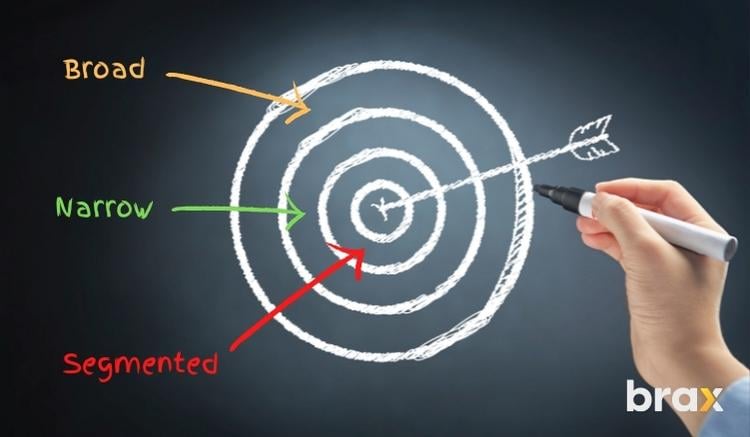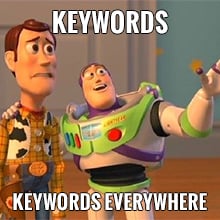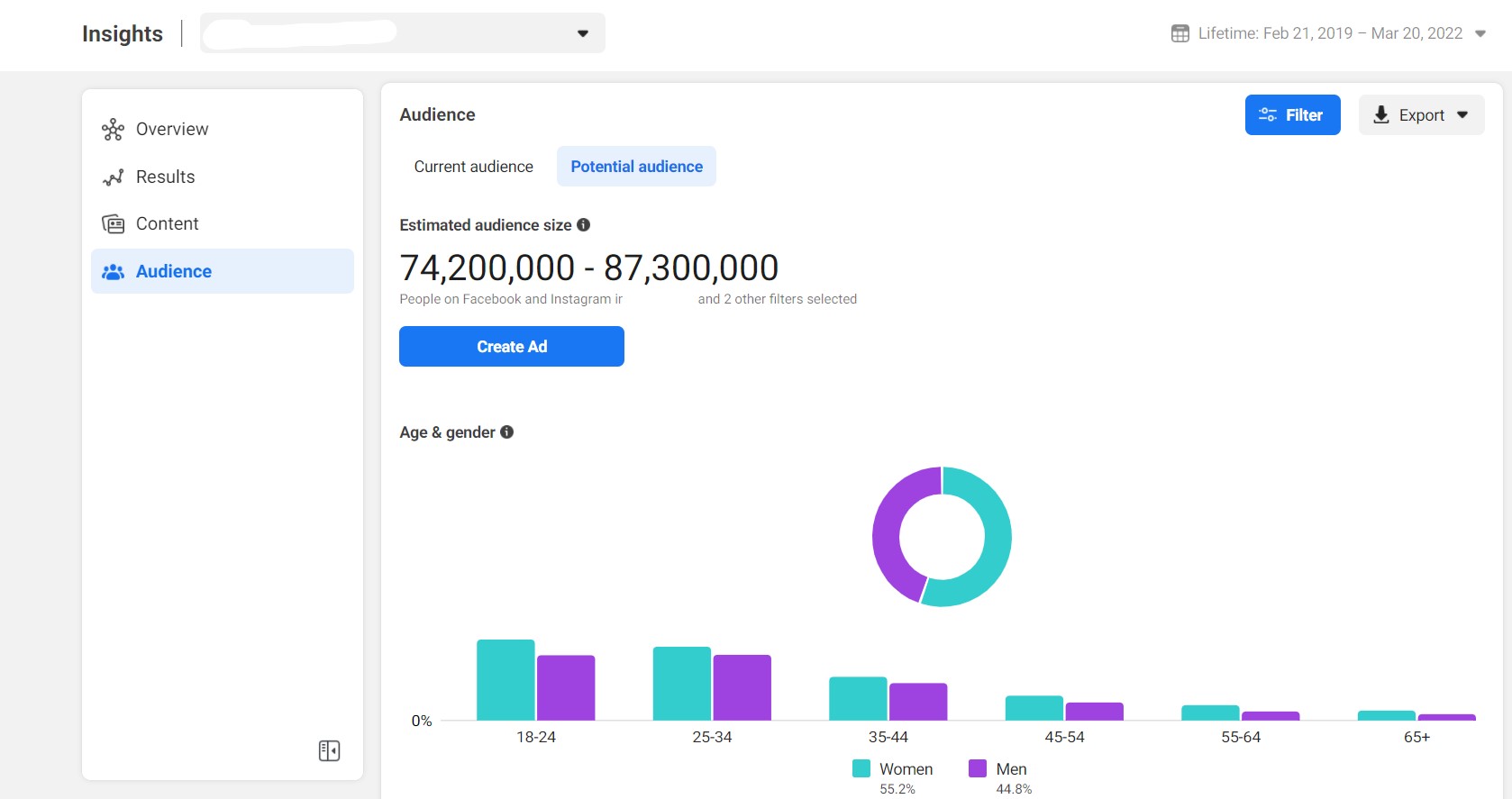Advertising without knowing your target audience is like walking blindfolded—you never know if you're walking down a clear path or if you're heading for a cliff. When it comes to marketing, working smart is always the way to go. This is why identifying your target market is crucial for your business.
Target marketing is a powerful way to reach your target audience, but it can be difficult to do. In this article, we'll show you how to apply effective and proven strategies for using target marketing in your business.

Here's what we'll cover in this article:
What are the Types of Targeting
How to Define Your Target Market
How Detailed Should a Target Market Be?
Six Ways to Segment the Market
Target Markets Applied in Real Life
Target Marketing has been around since the 1920s when advertisers started targeting specific audiences with ads in newspapers or magazines. Before the internet age, companies would have to spend time and money researching their desired demographic groups before they could start running an ad campaign.
Today, thanks largely to social media and data analytics tools like Facebook Ads Manager, businesses are able to pinpoint their customers with incredible accuracy while spending less time on research than ever before!
With just a few clicks of a mouse or taps on a screen, you can find out everything about your target market—if you know what you're looking for.
What is Target Marketing?
In simple terms, a target market is what marketers use to research and understand the interests of their potential customers. You can also use this strategy to know the hobbies and needs of your target audience.
Why do you need to know this?
Well, you can use this information to predict where your customers will be online and how to capture their attention.
With this information, you can tailor your message and budget to a particular niche that will most likely turn up positive results.
This strategy allows you to divide a larger market into smaller segments. For this reason, you can easily focus on certain groups within your target audience instead of reaching out to an entire market.
Why Use Target Marketing?
Target marketing is part of a holistic marketing strategy—it has a strong effect on your advertising, branding, consumer experience, and business operations.
Here are some of the benefits of having a well-identified target market:
-
You Can Speak Directly to a Targeted Audience

There's power in speaking directly to your audience. There would be a deeper resonance when your audience can relate to your offers.
Most bùsinesses with wide customer bases sometimes find it hard to create campaigns that speak directly to all their potential customers.
Due to having different viewers, it's almost impossible to resonate on a personal level. Using target markets eliminates this problem and allows you to focus on developing messages for a particular audience.
-
It Eliminates Guesswork
Target marketing allows you to reduce the amount of guesswork needed in your marketing efforts. By understanding your target market and what they want, you can easily create content and products that appeal to them.
This also includes developing a better understanding of customer needs and wants. With this knowledge, you'll be able to create a product that meets the needs of your niche market, increasing the chances of them buying from you.
-
It Increases Ad Efficiency
When you focus on a particular target market, it becomes easier to allocate resources efficiently. You can direct your efforts and resources to specific areas that will have the most impact on this group.
This also includes understanding what media they consume and which platforms they use. With this information, you can reach out to them on the channels they're most active on.
-
It Boosts Sales and ROI
Implementing a target marketing strategy can result in increased sales and return on investment. When you know who your target market is, it's easier to focus on selling them products or services that they need.
ROI can be increased by developing a strategy that resonates with the needs of your target market. When you do this, you create a connection with customers that leads to loyalty and word-of-mouth marketing.
-
It Allows You to Get High-Quality Lead Conversions
Speaking directly to people increases your chances of attracting the right audience. Your marketing strategy would be more effective as you'd be reaching out to people that are interested in what you offer.
Plus, connecting to the right people would increase your chances of getting high-quality and genuine leads that will surely convert.
-
It Helps You Stand Out From Your Competition

By focusing your marketing efforts on a smaller part of your audience, you'll be able to stand out from businesses offering the same services.
When a set of customers can identify your business and choose your offers, they would choose your brand over those that targets generally.
Plus, using a unique targeting strategy can give you even more sales and recognition. You can even offer a discount promotion to take you ahead of your competition.
-
It Helps Build a Loyal Following
In the process of standing out from your competition, you'd also be creating a long-lasting relationship with your customers since you're connecting with them on a more personal level.
When people think that your brand represents what they want and choose to identify with your business, they may become your loyal followers and continue to make purchases or patronize your business.
-
It Helps Improve Products and Services
Having a more intimate knowledge about your customers can open up new perspectives on the kinds of products or services you should offer or improve.
With a deeper understanding of your audience, you can place yourself in their position and find out how you can change, add or improve what you offer and focus on serving a better experience.
-
You Can Stay Focused
It always helps to have a point of focus so you don't go astray with your marketing strategies. With target marketing, you can be more specific with your strategies, direction, and initiatives.
You could also show what you want for your business and keep your team focused on your vision. Plus, with a focused approach, you can properly optimize your resources and shape your pending plans for both your marketing plan and business.
-
You'll Know Where to Find Them Online
Online platforms cater to different demographics. By understanding who your target market is, it'll be easier for you to identify which platforms they use and how to reach out to them.
For example, if you're targeting a younger audience, then you might want to focus on social media platforms like Snapchat and Instagram. If you're targeting an older audience, then you might want to focus on platforms like LinkedIn or Facebook.
And if you know where they are, you'll know what kinds of social media advertising to use in order to reach them.
It also helps reduce wastage as you wouldn't need to put as much effort into channels or campaigns that don't work well with your target market.
-
You Can Easily Identify Your Top-performing Channels and Assets

When you know who your target market is, it becomes easier to track the performance of each marketing channel or campaign.
By understanding what works and what doesn't, you can better allocate your resources in the future.
This also helps reduce wastage, as you wouldn't need to put as much effort into channels or campaigns that don't work well with your target market.
Speaking of tracking your advertising efforts to avoid wastage, have a look at Brax, an online advertising management platform.
With Brax, you can create, monitor, and optimize your native and social media advertisements in a single dashboard. Book free a demo with us today to see how it works.
Choosing a tailored audience for your marketing is not only a way to reach consumers in unique ways but also a way to eliminate overspending, which is a result of trying to target everyone on the market.
The billions-of-people approach to marketing will probably fail you in the long run. You won't get that attention from your audience if they feel they're just another number.
What are the Types of Targeting?
Before adopting target markets as your marketing strategy, it's important to choose the best type of targeted marketing that would fit your vision.
The goal of every marketing campaign is to get the maximum ROI. And you can achieve that by using the right type to reach your target audience. However, you don't always know everything about your target market at the onset, right?
It takes research and testing to be able to find the exact market to focus on, which brings us to the different types of target marketing.

Broad Targeting
This type of targeting involves casting a wide net and trying to reach as many people as possible with your message.
However, it can also be less effective because you're not reaching out to specific people who may be interested in what you have to offer. It's important to do your research and find out who your target market is before using this type of marketing.
Broad targeting is often used by businesses that are just starting out or do not have a very clear idea of their target market. It is also a good strategy for businesses that want to increase brand awareness.
It is crucial to research your target market and understand their needs so you can create relevant and effective marketing campaigns when going broad.
Narrow Targeting
Narrow targeting, on the other hand, is more focused and specific. It involves identifying a certain group of people who are likely to be interested in what you have to offer and reaching out to them directly.
Since you're targeting a specific group of people, you can create marketing campaigns that are more relevant and effective. You also have a higher chance of reaching your target market and getting conversions since you're addressing their needs and wants.
Narrow targeting is often used by businesses that have a clear idea of their target market. It's also a good strategy for businesses that want to increase sales or get more leads.
However, it's important to be careful not to alienate potential customers by being too specific.
Segmented Targeting
Another way of targeting audiences is through segmenting. This involves dividing your target market into smaller groups based on certain factors such as demographics, interests, or behavior.

By doing this, you can create marketing campaigns or ad creatives that are more relevant and effective for each group. Segmented targeting is often used by businesses that want to increase sales or get more leads.
It's also a good strategy for businesses that have a clear idea of their target market and want to create more personalized marketing campaigns.
With segmented targeting, you can create a marketing persona that will help you better understand each group and their needs.
Which Type of Targeting is Right for You?
Now that you know the different types of target marketing, it's important to decide which one is right for you.
Broad targeting is a good starting point for businesses that are just starting out or do not have a very clear idea of their target market. It's also a good strategy for businesses that want to increase brand awareness.
But if you want to be more specific and reach a certain group of people who are likely to be interested in what you have to offer, then narrow targeting is the way to go.
Remember to research your target market so you can create relevant and effective marketing campaigns when going broad or narrow. And if you want to go even further and divide your target market into smaller groups, then segmented targeting is the way to go.
How to Define Your Target Market
When using social media, you're not dealing with static market research. You'll need to be dynamic and constantly source data to increase your knowledge of your target market.
One way to engage in dynamic market research is creating a persona as a representation of your target market. Hence, you'll first need to define your target persona before you start defining your target market.
With that out of the way, here are five steps to help you properly define your target audience.
Step 1: Check if Your Product Fits with Your Client Persona
Keep in mind that whatever product or service you build has a purpose. So, it has to fit with certain personality types.
Hence, the first step to defining your target market is identifying your first three or four client personas and checking if your offer fits with them. If your business deals with multiple product types and services, you may have to focus the scope of your marketing on a line of products or just one product.
You can start this step by learning the 12 Brand Archetypes.
Don't forget that your offers should meet some specific needs of your customers. Thus, be sure to find out what those needs are and how you can meet them with your products and services in a unique way.
Step 2: Hashtags and Keywords

Hashtags and keywords are important ways to drive conversions from your target market. So, what you need to do here is dive into the wide knowledge base of the internet to search for keywords and hashtags that match the needs of your target persona.
Hence, you'll need to picture your personas in the territories of keywords and hashtags. If you have some knowledge of social media auditing and Search Engine Optimization (SEO), it will help in this step.
You can start your search for important keywords by thinking about the user journey stages for each of the target personas.
For the awareness stage, you should think of what your personas would search for on Google when they become conscious of what they need.
Moving on to the consideration stage, you should investigate what keywords buyers use to investigate all their available options before making a purchase. Also, there are ways to find out what keywords users are searching.
You can use tools like Google Ads keyword tool or Google trends. Other options include various commercial tools that can help you find keywords for SEO, Amazon marketing, and paid search.

Alternatively, you can use hashtags if you're using social media marketing. Find out what hashtags relate to your persona's needs. You can use tools like Hahtagify to get these hashtags, or you can search using your social media accounts.
Once you've got all the information you need, don't forget to add them to your target persona. Now, a picture of your target market should start taking form.
Step 3: Check Out Reviews
It's time to go deeper into the world of your persona by mining reviews and opinions about your type of product or service. Although this step is time-consuming, it will give you the benefits of rich user feedback and insight.
User reviews are always available to the public. So, you don't have to go through any difficult process to find them. You should read up on the reviews of both your and your competitor's products and services.
You can use popular marketing sites like Amazon, search engines like Google, and social media platforms to dig for golden reviews.
You should be looking for why a user selects a product, how the user describes that product, and the pros and cons they express in their reviews.
You should also note that your aim is not to become like your competitors. So it's not necessary to adopt everything you find from these reviews. Your business should remain unique through this process. Just use the feedback as additional insight on who your target market is and what they expect.
Step 4: Check Out Audience Insights
With the first three steps, you should have your first segmentation for your target market based on your persona's qualitative traits.
For a feeling of what your audience sizes would look like, you can take the insights you get from the first three steps to any social media platform. With this, you can easily measure what those insights represent.

If you're using Facebook, you can use Facebook's analytics, where you can get an estimated market size based on the basic geographic and demographic settings of your persona. You can also add interests that match your persona's keywords.
You can also visit your Facebook Business Manager and check the Audience Insights there.
Step 5: Save and Regularly Update Your Audience Insights
Now you've completed all the necessary steps for defining your target market. You should know the characteristics of its users and the market size.
If you use more than one persona, we recommend comparing all of them so you can get an estimate of the order values and buying frequencies they offer. Then, you can go ahead and choose your main target market from your list of target markets.
Also, ensure you store the information you've gotten in a work file. Make sure the file format allows you to improve and reuse your data. You can think of this process as recycling as you can continuously work on your insights and improve your understanding of the needs and behavior of your users.
How Detailed Should A Target Market Be?
The answer will take into consideration how detailed the product/service is.
If your product or service is a very narrow niche, it's likely you only need to research one segmentation persona with specific information about their needs, desires, etc.
Let's use as an example when selling a book on social media marketing.
►You only need to research those people who have money and time but lack knowledge of social media management.
►In this case, you may pick 6-10 target personas that include their demographic traits (e.g., age, race), psychographic traits (e.g., attitude towards social media), and occupation/hobbies (e.g., designer). Obviously, these narrowed-down categories are much smaller than the population at large.
If your product or service is broader, then you'll need to target a larger persona base.
As an example, let's say you're selling clothes. You'll need to consider many different types of people who are likely to buy clothes from you. This includes their demographic traits (e.g., age, income), psychographic traits (e.g., fashion sense), and occupation/hobbies (e.g., those who work in an office).
The level of detail for your target market depends on how narrow or broad your product or service is. If it's narrow, you can get away with researching just a few specific personas. If it's broad, you'll need to research many different personas.

Defining your target audience is not something you do once. You'll need to be flexible and make adjustments according to what's trending. Hence, your target market insights need to be as detailed as possible to avoid feeling lost when you revisit them.
At the bare minimum, it should include who, where, why, and how.
Who: Demographics
Your target market should include the type of people that need your product or services. It should also have the basic information of these people like age, family size, occupation, educational level, and gender.
For instance: "Our target customer is female-identifying, aged between 20-38 with a medium-sized family (a partner and 0-4 children). She works an online job and makes fairly above the average median income."
Where: Geographics
Your target market should also include the details of your target audiences' location. For even more details, you can add details like population and area size, and climate.
For instance: "We believe our target customers live in suburban areas—zip codes with fairly above-average median incomes. In areas with high climates all year long."
Why: Psychographics
What are the choices your consumers make, and why do they make them? The information you get about their personality and lifestyle will help you map out their buying patterns.
For instance, if you think about why people buy your products, you can learn how many of your products they need and how frequently they'd make purchases.
You can figure out what benefits to offer the customers that help you stand out from the competition. Additionally, you should find out how loyal customers are to your business and competitors' businesses why.
"We think that our target customers will probably buy two sets of gym outfits every year. They can be loyal if they find a business that offers what they want. But we think our business and the fact that no one produces gym outfits like ours in the UK will have more resonance."
How: Behaviors
What are the behaviors of your consumers?
Are they all buying products to meet their needs?
How much information have they gathered on this need, and how your product or service solves it?
And how do they regard their needs and your products?
These are the details relating to customer behavior that you need in your target market.
"Our target customers are high impulse buyers. As long as they need it, they will buy it with little or no prior research."
Six Ways to Segment the Market
You'll be doing a lot of segmenting if you want to get your perfect target market. Segmenting involves breaking a wide audience base consisting of existing and prospective groups into smaller segments based on the type of characteristics they share.
You can get five different target market segments, including demography, psychographic, product and service usage, brand preference, and decision process segmentation.

1. Demographic Segmentation
Demographic segmentation means dividing your market based on the basic information of your prospects. Under the demographic segmentation, you can further divide your market into nine segments:
-
Age
You can use age brackets as a focal point for target marketing. Knowing the age of your prospective customers can help develop strategies to reach out to that age group in the best way possible.
You can't target millennials the same way you target baby boomers. Likewise, you can't target a new parent the same way you target a grandparent. Choosing a particular age group will allow you to create or use particular niches that attract them.
-
Family Size
The size of your target's family (if any) is another valuable target group. The needs of a single person are quite different from that of a person with an entire family.
Families can be any of the following:
- single parents (single mom or single dad)
- childless couples
- single offspring
- multiple offsprings
A person with a family to support will be more likely to think about the long-term effects of their choices, while a single person may be more spontaneous. Keep this in mind when devising marketing plans and strategies.
-
Occupation
Your target's occupation is another relevant factor in deciding what products or services you offer them. A blue-collar worker is going to have different needs than a white-collar worker.
You can also use occupation as a way to find out how much your target earns and, as a result, what they can afford. This is important because it will help you price your products and services accordingly.

-
Gender
Gender is another demographic that you can use to segment your market. It's important to remember that gender doesn't always equate to physical traits; rather to how the person identifies themselves to be. Their gender orientation can sometimes dictate their interest in products and/or services.
There are many products and services that are marketed specifically to one gender or the other. However, there are also many products and services that are marketed to both genders.
-
Income
Everyone has different desires. These desires are products of our economic status and money they earn most of the time. Using the income of your target market allows you to compare your prices with what your target market is willing to spend.
Also, you can look at the campaigns, discounts, and promotions you use to drive action. You can either market your goods and services to higher income levels or lower income levels. The separation in prices is not just about value but also what your customer base can spend.
One good example of a business that uses this segment is Victoria's Secret. The company has different prices for the clothing and perfumer that they are selling, and they know what income bracket their customers fall into.
-
Geographic Location
Geographic segmentation is one of the oldest methods of market segmentation. You can use this method when your products or services are limited to a certain area or when your target market is located in a specific region. The main advantage of this method is that it is easy to implement and understand.
If you have a business that offers specific services like plumbing, restaurants, etc., you'd need to take note of the geographical location of your target audience. Customers would very likely not come from miles away just to receive your services. Hence, you should only reach out to people closer to you with geographic target marketing. The closer your clients are, the more impact they would have on your business for such services.
If you allow for product delivery or home service, make sure your geographic target is within your range. To organize everything effectively, you can use the best delivery route planner apps and have better planning and save time. Anything outside of it is a waste of resources.
2. Psychographic Segmentation
Psychographic segmentation is dividing your market based on their psychological characteristics, personality traits, and values. These factors will help you understand how people think and what motivates them to purchase a product or service.
There are four different psychographic segments:
-
Behavioral
This type of segmentation is based on behavior like occasions when customers use your product, benefits they seek, user status, loyalty, and readiness to buy.
-
Attitude
This type of segmentation is based on attitude towards certain products or services. It includes beliefs, opinions, and convictions that customers have about a company or product.
-
Lifestyles
This type of segmentation is based on the way people live their lives. You can further divide this segment into four different parts: Activities, interests, and opinions (AIO), demographics, social class, and culture.

-
Personality
This type of segmentation is based on the different personality types that people exhibit. It includes things like their level of self-expression and how much they care about others.
You can further divide this segment into five different parts: Openness to experience, conscientiousness, extraversion, agreeableness, and neuroticism.
3. Product and Service Usage Segmentation
This type of segmentation is dividing your market based on when, how, and how often they use your product or service. There are three different product and service usage segments:
-
Usage occasions
This type of segmentation is based on when customers use your product or service.
When do you wear a jacket? Or when do you wear a pair of sunglasses? Both of these products are based on the situation. You'll wear a jacket when it's too cold outside and sunglasses when it's too sunny outside. Thus, you can segment your target market based on situational usage.
Also, some products are only used during certain seasons (seasonal usage). For example, people usually only buy Christmas trees during the winter season. Thus, you can segment your target market based on when they use your product.
-
User status
This type of segmentation is based on whether customers are first-time users, regular users, or non-users of your product or service.
Not all products will receive the same attention from customers. Some customers may use it lightly, while others may use it heavily, depending on the type of product or service.
A residential cook would have different needs for tools when compared to cooks in large restaurants. Hence, your market type can vary depending on the usage types of your target audience.
-
Benefits sought
This type of segmentation is based on what benefits customers seek from using your product or service.
Some customers may use your product because they need it, while others may use it for convenience. For example, some people shop online because they can't get out of the house for safety reasons (need), while others buy online instead of going to a physical store because it's easier (convenient).
4. "Customer Needs" Segmentation
This type of segmentation is dividing your market based on what needs customers have that your product or service can address.
There are four different customer needs segments:
-
Functional needs
This type of segmentation is based on the basic need that your product or service satisfies.
Some examples of functional needs include safety, security, and convenience. These factors will help you understand how people think and what motivates them to purchase a product or service.
-
Social needs
This type of segmentation is based on the need for customers to feel accepted and belong to a group.
Some examples of social needs include the need for approval, recognition, and status.

-
Emotional needs
This type of segmentation is based on the need for customers to feel good about themselves.
Some examples of emotional needs include the need for customers to feel happy, excited, or calm.
-
Self-actualization needs
This type of segmentation is based on the need for customers to be their best selves.
Some examples of self-actualization needs include the need for growth, independence, and creativity.
5. Brand Preference Segmentation
This type of segmentation is dividing your market based on the brand that they prefer.
There are four different brand preference segments:
-
Brand Loyalists
This type of segmentation is based on customers who only purchase products from one brand. Customers in this category identify with a brand that they feel is good for them.
These customers are typically very satisfied with the products and services that they receive from the company and have no desire to switch to a different brand.
-
Brand Switchers
This type of segmentation is based on customers who are willing to purchase products from multiple brands.
These customers may be motivated by factors such as price, quality, or selection when choosing which brand to purchase from.
-
Brand Sensitives
This type of segmentation is on customers who are influenced by a brand's image or reputation when making a purchase decision.
These customers are not loyal to a specific brand, but they are more likely to purchase products from a company that has a good reputation.
-
Brand Indifferent
This type of segmentation is based on customers who do not care about and are not influenced by the brand of the product they're purchasing.
These customers may be motivated by factors such as price, quality, or selection when choosing which product to purchase.
6. Decision Process Segmentation
Your target market can also vary according to the decision-making process of your customers. In this category, you're dealing with either an individual or an organization.

· Individuals
When you're targeting individuals, you need to think about their income levels and personalities. You'll also need to consider factors like gender and age when making your decisions.
· Organizations
If you're targeting organizations, you'll be thinking about the organization's size and structure. You'll also need to research the decision-makers in those organizations.
Individuals and organizations have different buying motivations. Based on research and our own tests, we've found that individuals are emotional buyers, whilst organizations are rational buyers because the decision-maker is not just one person.
Target Audience Example
Based on the market segmentation discussed above, here's a rough example of how to identify your target market and create a marketing persona.
Tom is a 35-year-old male who's married with two kids. He's an accountant who likes to play golf in his free time. Tom is interested in learning about social media marketing so he can stay connected with friends and family online.
Demographic Traits:
Age: 35
Marital Status: Married
Kids: 2
Occupation: Accountant
Hobbies/Interests: Golfing
Psychographic Traits:
Lifestyle: Mainstream
Attitude: Pragmatic
Needs: Competence
Values: Connection with others
Behavioral Traits:
Intentions: Learn about social media marketing
Actions: Follow accounts/pages on social media related to his interests.
How to Market to Tom
Based on the persona of Tom, a marketer could target him with social media marketing content that is pragmatic and focused on competence. This would be in line with his needs and values.
Additionally, the marketer could create ads or posts that target Tom's interests, such as golfing.
This would help to create a connection with Tom and encourage him to learn more about the business through Facebook or Instagram since people of his age and interest frequent these social media networks.
If the offer is business or career-related, the marketer can also advertise through Linkedin or through business websites via native ads.
Target Markets Applied in Real Life
The best way to understand the importance of creating a target market and tailoring your marketing efforts to them is by discussing examples.
Checking out how other prominent brands use target markets to build a solid target audience profile is your last step to creating your target market.
You can take these fantastic examples and develop them into your marketing strategy based on your needs.
Nike

Nike's target market is athletic males and females aged 18-34 who have a higher income. They use "The Athlete" as their target persona, which is someone who is physically fit, passionate about sport, and values competition.
Some of Nike's strategies to advertise to this segment include creating ads and posts that are focused on athletic ability and competition, as well as sponsoring events and athletes that align with their target persona.
Apple

Apple's target market consists of early adopters of technology who are passionate about design. They use this to their advantage by designing beautiful products that sell well in the higher income brackets.
Apple succeeds by developing a sleek, stylish product that is easy to operate and doesn't have a high learning curve for the average user.
Coca-Cola

Coca-Cola's target market consists of young adults aged 18-35 years old who have a low to medium income level.
They use ads and posts that focus on the fun and pleasurable aspects of drinking their product, as well as sponsoring events that are enjoyable for this age group.
In Conclusion
Your target market is a group of consumers your business resonates with, and your sales team and entrepreneurs need to know the kind of customers your business is dealing with.
Identifying the target market of your business or specific product/service is essential to developing an effective marketing strategy.
By understanding who your ideal customer is, you can better tailor your message and create content that resonates with them. This will help you to build relationships with potential customers and turn them into lifelong fans of your brand.
Target Marketing is an important part of business planning and marketing. In fact, whatever digital marketing strategy you are applying, you need to know your target market in order to create a successful advertising campaign!
If you're at a loss about how to narrow down to your target market and create effective ads, reach out to us! Our professional marketers are experts at planning and executing successful marketing campaigns for businesses of all sizes.

